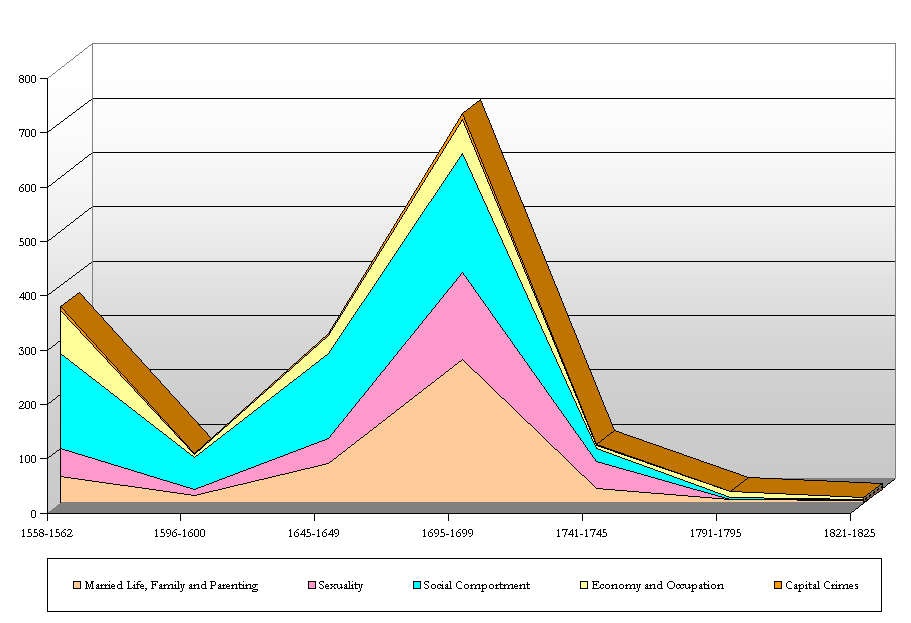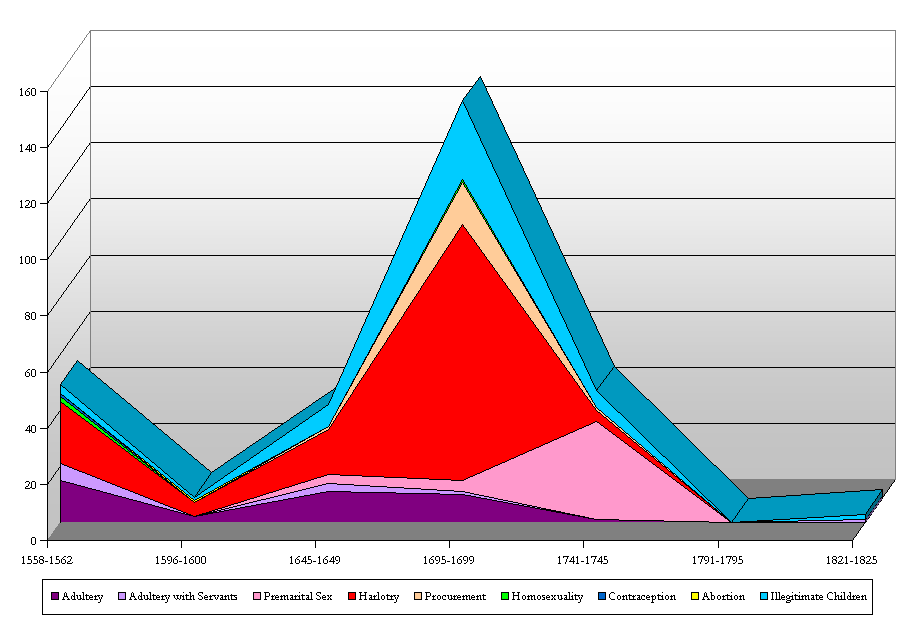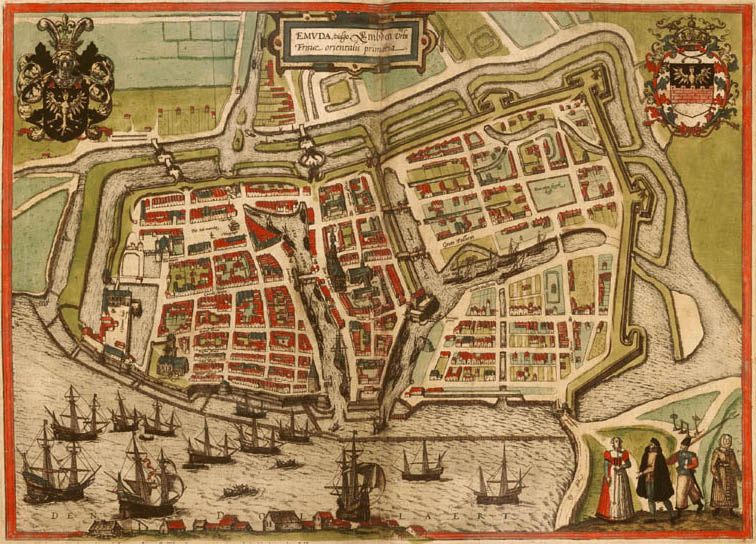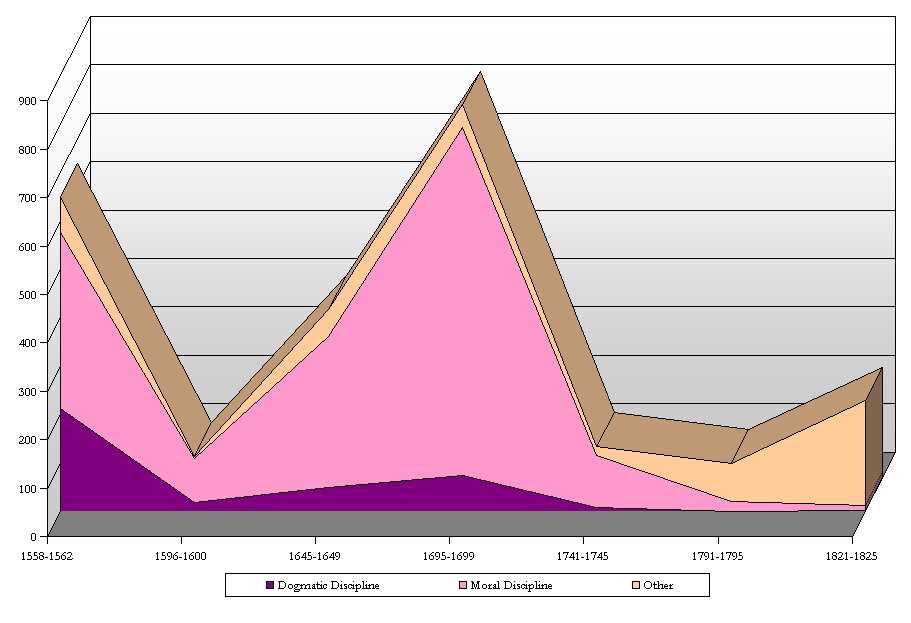2) Moral
Discipline in Emden, 1558-1825

This chart represents a break-down
of the category, "Moral Discipline," into its sub-categories: (a)
Married Life, Family and Parenting, (b) Sexuality, (c) Social Comportment, (d)
Economy and Occupation, and (e) Capital Crimes. Although the distribution of
activities among these subcategories was more consistent than the general categories,
there were nevertheless important changes taking place. Cases involving "Social
Comportment" dominated during the first phase -- these included offenses
such as brawling, defamaion, lying, breach of contract, violation of sumptuary
laws, gambling, dancing, drunkenness, uncleanliness, and "keeping bad company."
In the seventeenth century, the consistory shifted its attention to the policing
of married life and sexuality; then in the eighteenth century, its activities
declined in all categories.
3) Sexual
Discipline in Emden, 1558-1825

If we look at the sub-category "Sexuality,"
we find significant shifts taking place. The cases in this category all involved
some form of illicit sex, be it adultery (extramarital sexual intercourse, excluding
prostitution and sex with domestic servants), premarital sex, "harlotry"
(i.e., working as a prostitute), "procurement" (contracting the services
of a prostitute), homosexual sex, contraception, abortion, and bearing children
out of wedlock. In this category, the dominant concern through the sixteenth
and seventeenth centuries was with prostitution (in both aspects); then in the
eighteenth century, attention shifts to premarital sex, either because prostitutes
are no longer readily available to males or because the consistory decided to
intervene against the common practice of couples to commence sexual activity
at betrothal (as opposed to marriage).
 Social
Discipline in a Single Town (Emden, 1558-1825)
Social
Discipline in a Single Town (Emden, 1558-1825)
